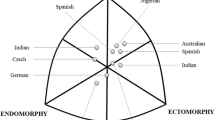Abstract
Estimates of animal performance often use the maximum of a small number of laboratory trials, a method which has several statistical disadvantages. Sample maxima always underestimate the true maximum performance, and the degree of the bias depends on sample size. Here, we suggest an alternative approach that involves estimating a specific performance quantile (e.g., the 0.90 quantile). We use the information on within-individual variation in performance to obtain a sampling distribution for the residual performance measures; we use this distribution to estimate a desired performance quantile for each individual. We illustrate our approach using simulations and with data on sprint speed in lizards. The quantile method has several advantages over the sample maximum: it reduces or eliminates bias, it uses all of the data from each individual, and its accuracy is independent of sample size. Additionally, we address the estimation of correlations between two different performance measures, such as sample maxima, quantiles, or means. In particular, because of sampling variability, we propose that the correlation of sample means does a better job estimating the correlation of population maxima than the estimator which is the correlation of sample maxima.
Similar content being viewed by others
References
Adolph SC, Hardin J (2007) Estimating phenotypic correlations: correcting for bias due to intraindividual variability. Funct Ecol 21: 178–184
Adolph SC, Pickering T (2008) Estimating maximum performance: effects of intraindividual variation. J Exp Biol 211: 1336–1343
Bauwens D, Garland T Jr, Castilla AM, Van Damme R (1995) Evolution of sprint speed in lacertid lizards: morphological, physiological, and behavioral covariation. Evolution 49: 848–863
Bennett AF (1980) Thermal dependence of lizard behaviour. Animal Behav 28: 752–762
Bennett AF (1990) Thermal dependence of locomotor capacity. Am J Physiol 259: R253–R258
Cejudo D, Márquez R (2001) Sprint performance in the lizards Gallotia simonyi and Gallotia stehlini (Lacertidae): implications for species management. Herpetologica 57: 87–98
Denny M, Gaines S (2000) Chance in biology: using probability to explore nature. Princeton University Press, Princeton
Djawdan M, Garland T Jr (1988) Maximal running speeds of bipedal and quadrupedal rodents. J Mammal 69: 765–772
Dohm MR, Hayes JP, Garland T Jr (1996) Quantitative genetics of sprint running speed and swimming endurance in laboratory house mice (Mus domesticus). Evolution 50: 1688–1701
Gaines SD, Denny MW (1993) The largest, smallest, highest, lowest, longest, and shortest: extremes in ecology. Ecology 74: 1677–1692
Gumbel EJ (1958) Statistics of extremes. Columbia University Press, New York
Herrel A, Podos J, Huber SK, Hendry AP (2005) Bite performance and morphology in a population of Darwin’s finches: implications for the evolution of beak shape. Funct Ecol 19: 43–48
Hertz PE, Huey RB, Nevo E (1983) Homage to Santa Anita: thermal sensitivity of sprint speed in agamid lizards. Evolution 37: 1075–1084
Holem RR, Hopkins WA, Talent LG (2006) Effect of acute exposure to malathion and lead on sprint performance of the western fence lizard (Sceloporus occidentalis). Arch Environ Contam Toxicol 51: 111–116
Hyndman RJ, Fan Y (1996) Sample quantiles in statistical packages. Am Stat 50: 361–365
Irschick DJ, Austin CC, Petren K, Fisher RN, Losos JB, Ellers O (1996) A comparative analysis of clinging ability among pad-bearing lizards. Biol J Linnean Soc 59: 21–35
Katz RW, Brush GS, Parlange MB (2005) Statistics of extremes: modeling ecological disturbances. Ecology 86: 1124–1134
Losos JB (1990) Ecomorphology, performance capability, and scaling of West Indian Anolis lizards: an evolutionary analysis. Ecol Monogr 60: 369–388
Losos JB, Creer DA, Schulte JA II (2002) Cautionary comments on the measurement of maximum locomotor capabilities. J Zool Lond 258: 57–61
Losos JB, Walton BM, Bennett AF (1993) Trade-offs between sprinting and clinging ability in Kenyan chameleons. Funct Ecol 7: 281–286
Spearman C (1904) The proof and measurement of association between two things. Am J Psychol 15(1): 72–101
Tudorache C, Blust R, De Boeck G (2007) Swimming capacity and energetics of migrating and non-migrating morphs of three-spined stickleback Gasterosteus aculeatus L. and their ecological implications. J Fish Biol 71: 1448–1456
van Berkum FH (1986) Evolutionary patterns of the thermal sensitivity of sprint speed in Anolis lizards. Evolution 40: 594–604
van Berkum FH, Huey RB, Tsuji JS, Garland T (1989) Repeatability of individual differences in locomotor performance and body size during early ontogeny of the lizard Sceloporus occidentalis. Funct Ecol 3: 97–105
Van Damme R, Bauwens D, Verheyen RF (1991) The thermal dependence of feeding behaviour, food consumption and gut-passage time in the lizard Lacerta vivipara Jacquin. Funct Ecol 5: 507–517
Zani PA (2001) Clinging performance of the western fence lizard, Sceloporus occidentalis. Herpetologica 57: 423–432
Author information
Authors and Affiliations
Corresponding author
Rights and permissions
About this article
Cite this article
Head, A.W., Hardin, J.S. & Adolph, S.C. Methods for estimating peak physiological performance and correlating performance measures. Environ Ecol Stat 19, 127–137 (2012). https://doi.org/10.1007/s10651-011-0178-8
Received:
Revised:
Published:
Issue Date:
DOI: https://doi.org/10.1007/s10651-011-0178-8




